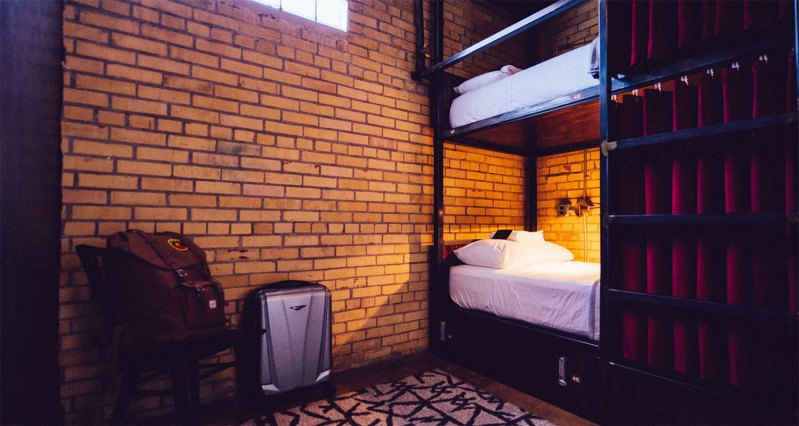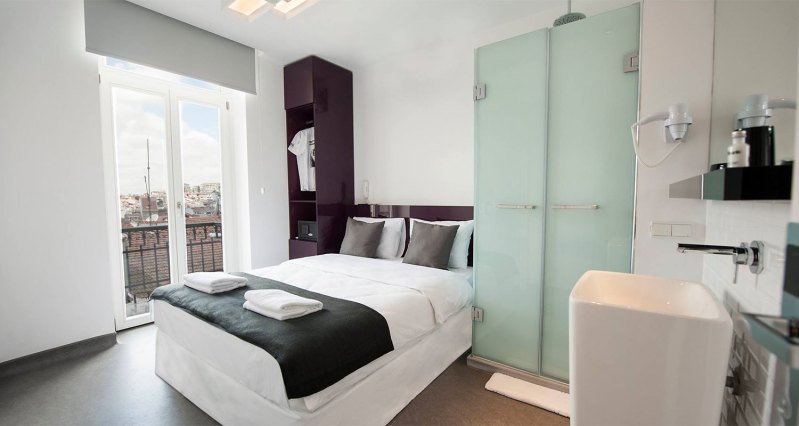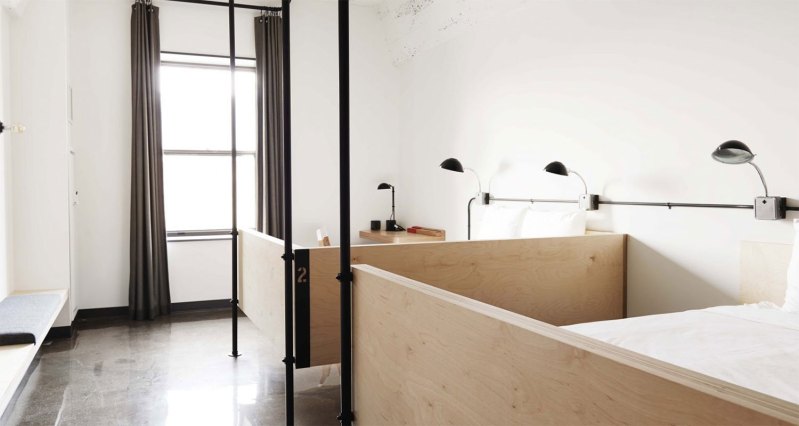Crashing in stacked dorm beds, sharing questionable bathrooms, and dealing with ever-present snoring bunkmates are all part of the budget traveling hostel experience. Or, at least, they used to be. Today’s best hostels have evolved to be chic, digital-friendly, and — dare we say — downright luxurious. Here are three standout luxury hostels around the world.
Native Hostels (Austin, Texas)

The luxury hostel trend is still relatively new to the U.S., but Austin-based Native Hostels is leading the charge. The boutique property is a product of its host city with the unabashed catchphrase, “Curating a culture of fuck yes.” The hostel’s industrial-meets-art-house decor is inspired heavily by its former life as a crashpad for railway workers in the late 19th century. Not surprisingly, it distinctly targets youth and millennial travelers with a bevy of on-site amenities, including a live music stage, a restaurant/bar, and art gallery space. The staff also encourages and organizes plenty of social activities, like DJ nights and local pub crawls. Standard beds start between $49-59 per night; the 10-person Romper Room tops out at $800 per night.
Bunk (Istanbul, Turkey)

After Asia, Europe boasts the world’s second most heavily trafficked backpacker trail. So, it’s no surprise that many of the continent’s most popular cities are home to some truly innovative boutique hostels. Bunk in Istanbul is a testament to the city’s progressive, creative, and uninhibited youth vibe. The decor is a blend of sleek, clean-lined European furnishings; crisp marble-and-tile bathrooms with overhead rain showers; and bold pops of color throughout. By day, the ground-level cafe — complete with kilim rugs, marble tables, and walnut-encased radios — bustles with a Bohemian vibe over Turkish coffee. Later in the day, the rooftop hot tub and sundeck serve as the social hub. After dark, DJs spin records in the communal space and the entire property — from the street to the hallways to the rooms — evolves into a lively bar scene. Dorm beds start around $12 per night; private rooms can be had for around $30 per night.
The Robey Hall (Chicago, Illinois)

Tucked into the funky, eclectic (you might say “hipster”) Chicago neighborhoods of Bucktown and Wicker Park is The Robey Hall. The hotel sidesteps the term “hostel” altogether —opting instead for a hotel with “multi-bedded rooms” — but it’s a hostel all the same. It just happens to be a rather swanky one that embraces much of the original architecture of the century-old Hollander Fireproof Warehouse building in which it’s housed. Exposed brick and raw steelwork surround custom lighting fixtures and bright birchwood furnishings for a thoroughly contemporary feel. Each of the 20 rooms is bright and intentionally sparse with a distinct, Euro-modern aesthetic. All include thoroughly modern amenities like minibars, smart TVs, free Wi-Fi, and large showers with Beessential bath products. The onsite H!Bar serves as a cafe and co-working space by day, and a bar and live music venue after dark.Off-season rates for a four-person room start around $160/night.
Feature image by Charles Reagan.



